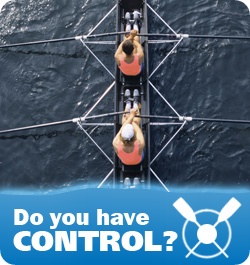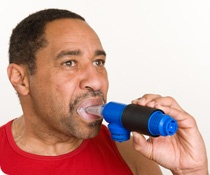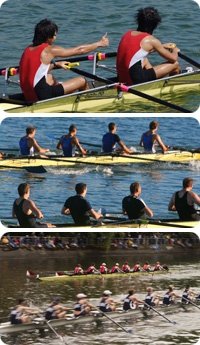 July is an eventful month for organized sports in Great Britain as the world witnesses golf’s British Open, tennis’ Wimbledon, and rowing’s prestigious Henley Royal Regatta. In fact, the latter sport is among the oldest in modern times – first held in 1839.
July is an eventful month for organized sports in Great Britain as the world witnesses golf’s British Open, tennis’ Wimbledon, and rowing’s prestigious Henley Royal Regatta. In fact, the latter sport is among the oldest in modern times – first held in 1839.
Competitive rowing is not to be taken lightly, nor is it a sport in which an athlete can easily attain a professional level. The sport demands an intense, continuous level of exertion that becomes more difficult to maintain through the race as fatigue sets in. Rowing calls for excellent upper body strength, core balance, cardiovascular endurance and focus. The concentration needed to maintain form and rhythm is supported by steady breathing and lung strength.
The Henley Royal Regatta
Britain has a long history of rowing appreciation, as demonstrated by the annual Henley Royal Regatta event. Lasting five days in July, the regatta is an international event, drawing crews from all over the world to compete. This year, Ruder Club Hansa from Germany claimed the Grand Challenge Cup, while USA’s Harvard crew won the intermediate-level Ladies’ Challenge Plate (which, despite its name, is a men’s event).
Timing is Everything
There are numerous types of races and boats, classified by the number of rowers (spanning from singles to pairs, quads, and eights) and type of rowing. Every event with multiple rowers includes an extra challenge in the necessity for every athlete to be in sync on every stroke. Intense concentration is required to accomplish synchronization and maintain one’s endurance. Proper breathing is essential as rowers must never be overwhelmed nor let the lack of breath disrupt the rhythm.
Few other sports rely on precise breathing as much as rowing. The two most common breathing techniques are to have either full lungs or empty lungs the moment the oar enters the water. With full lungs, rowers exhale during the stroke and inhale during the recovery stage, which is the interval between when the oar exits the water and before re-entry. When using the empty lung technique, the athlete inhales during the stroke and exhales during recovery. The benefit of the empty lung approach is that the knees are brought to the chest after the exhale, thus allowing the rower to reach slightly further. Additionally, the thighs squeeze the lungs emptier than normal, encouraging a greater exchange of oxygen in each breath.
A Thorough Work-Out
Though rowers may be known for their well-built shoulders, many are surprised to learn that rowing builds every major muscle group in the body. With every stroke pulled, rowers work quads, biceps, triceps, lats, glutes, and abdominals. As a low-impact sport, athletes are relatively safe from common sprains and injuries. Even back pain is unusual, unless rowing with improper form.
PowerLung made for Rowers
 Rowing has grown in popularity dramatically over the past 50 years – including in the U.S. This fact isn’t lost on PowerLung co-inventor and English-born Barry Jarvis, whose life-long athletic pursuits included Olympic-level rowing. In fact, he competed at the Henley Regatta in the early 1960s.
Rowing has grown in popularity dramatically over the past 50 years – including in the U.S. This fact isn’t lost on PowerLung co-inventor and English-born Barry Jarvis, whose life-long athletic pursuits included Olympic-level rowing. In fact, he competed at the Henley Regatta in the early 1960s.
“When I was eight-years old, one day my father told me we were going rowing,” Jarvis remarked. “I didn’t really have a choice. Thankfully, I enjoyed it.”
Plagued by bronchitis as a child, Jarvis believes his chief obstacle – and that of many athletes in a variety of sports – is breathing. “I realized that if I could do something about my lung capacity, I could dramatically improve my performance.”
A self-described “tinkerer” who, as a child, “fiddled around with inventions” in his engineer father’s workshop, Jarvis developed PowerLung in the 1990s with breathing and its impact on athletic performance top of mind. In fact, one of the early distributors of PowerLung in the United Kingdom was Raymond Simms Rowing, a manufacturer of rowing and sculling boats.
Jarvis has watched as rowing has developed more sophisticated training techniques over the past 25 years. With his ties to the sport and business acumen, PowerLung has become a key component of the resistance-training regimens for several world-class competitors.
 For Phil Rowley of London’s Tideway Scullers School, the device has proven effective. “I was skeptical at first about whether PowerLung would improve the athletes’ performance. Within 3 weeks, I noticed a difference in the girls’ breathing… their pulse rates were more controlled as their exhalation technique became more positive,” said Phil Rowley, coach at London’s Tideway Scullers School. “Their water work also has improved, as they are now able to sustain longer periods of work before fatigue sets in.”
For Phil Rowley of London’s Tideway Scullers School, the device has proven effective. “I was skeptical at first about whether PowerLung would improve the athletes’ performance. Within 3 weeks, I noticed a difference in the girls’ breathing… their pulse rates were more controlled as their exhalation technique became more positive,” said Phil Rowley, coach at London’s Tideway Scullers School. “Their water work also has improved, as they are now able to sustain longer periods of work before fatigue sets in.”
For more about PowerLung and its impact on rowing, visit our benefits for rowing page.

